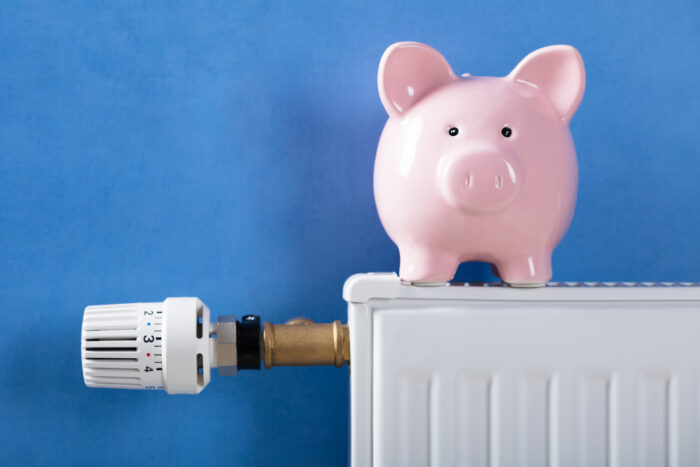Central heating
Heating and hot water make up around 70% of our energy bills.

With high energy prices, it’s more important than ever to make sure we’re getting value for money from our system and finding ways to reduce heating bills.
With a little know-how, there are several tweaks you can make to your central heating. These can help you get your energy bills under control.
What is central heating?
All heating needs energy to make it work. That energy can come from almost anything: wood, steam, or even the natural heat within the Earth’s crust. In most Scottish homes this energy comes from burning:
- Gas
- Oil
- Liquid Petroleum Gas (LPG)
In a central heating system, the fuel is burned in one (central) place. Burning the fuel creates heat. Finally, the heat travels around your home.
A typical example is a gas central heating system:
- Gas is burned in one (central) place – your boiler
- The boiler uses the gas to heat up water, just like a stove-top kettle
- This hot water flows to your radiators, which start to get hot
There are also renewable types of central heating systems. Renewable central heating systems don’t burn fossil fuels (like gas and oil) to produce heat for your home. Instead, the heat comes from renewable sources, such as the sun, the air, or the ground.
Wet and dry central heating
You might have heard gas central heating being called a ‘wet’ system. This is because the system uses a liquid (water) to move heat around your home.
In wet central heating systems water is heated up in one place and sent around your home. It usually travels through pipes. The pipes run through your radiators and/or underfloor heating.
In ‘dry’ central heating systems (called warm air systems) heat doesn’t travel in a liquid. Instead, warm air is sent around your home. It usually moves through ducts or vents.
Most central heating in Scotland is the ‘wet’ kind.
How to control your central heating
Saving money on your heating is all about getting as much control over it as possible. Most central heating systems come with a few simple gadgets to help you. We’ll take a look at each type of controller and share some tips on how to use them efficiently.
Controlling your boiler
Boilers heat up water. This hot water is then sent around our radiators to warm our home.
The boiler is usually controlled by a programmer. We’ve put together a separate guide on how to get the most out of your programmer.
Some boilers can also send hot water to your taps and/or shower. These are known as combi (combination) boilers. If you don’t have a combi boiler, your hot water will come from a hot water cylinder. This is a large storage tank which you’ll usually find in a big cupboard.
If you have a combi boiler (no hot water tank), a simple money-saving trick is to lower your boiler’s flow temperature. The team at The Money Saving Boiler Challenge are confident you’ll save around £112 a year if you set your flow temperature to 60 degrees.
If you have a hot water tank, then take a look at hot water cylinder section for tips on saving energy.
Room thermostat
The room thermostat controls how warm your home gets. You can think of it like the temperature control on an oven. It turns the boiler on and off to maintain the temperature that you’ve set.
The room thermostat helps us save money by making sure our home is only as warm as we need it to be. If we’re warm enough at 21 degrees, then we don’t need our home to reach 23 degrees. The extra heat isn’t worth the extra cost.
Read more on how to control your thermostat here.
Thermostatic Radiator Valves (TRVs)
The controls on your radiators – called Thermostatic Radiator Valves (TRVs) – let you set each radiator’s temperature. They work by controlling the amount of hot water that flows into the radiator they are attached to.
Turning the TRVs to a higher setting lets more hot water to flow into the radiator. This heats it up more. Turning the TRV to a lower setting does the opposite.
Smart TRVs are the next generation of TRVs. They give you greater control over your heating, with the ability to set each radiator to a specific temperature.
Read this guide to find out more about TRVs and Smart TRVs.
Useful pages
Is this page useful?